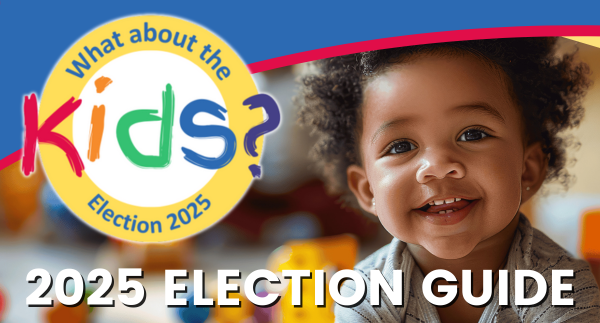Posted on July 11, 2025

Senior Policy Analyst for Early Childhood Education
This is a common cry across the country, and New Jersey is no exception. Families are struggling to find quality child care, and when they do, the cost is often unaffordable. What’s driving this crisis, and how do we begin to fix it?
A Broken Market
In other industries, companies might cut staff or raise prices to cope. But in child care, cutting staff isn’t an option due to licensing regulations. You need ample staff to maintain safe and nurturing learning environments. And raising tuition? Many families are already financially stretched to the limit.
Worse yet, there's no room to trim wages. Early educators, mostly women and disproportionately women of color, earn less than dog walkers, with a national average of just $15.41/hour according to the U.S. Bureau of Labor Statistics. Burned out and underpaid, many early care educators are leaving the field for less stressful, better-paying jobs in retail or warehouses. That means fewer open classrooms, longer waitlists, and even more pressure on parents trying to access and afford child care.

Let's make children and their
families the center of the
2025 Election Campaign.
The Cost of Child Care to Families
Wages account for about 80% of a child care center’s budget, leaving razor-thin margins to cover everything else. The pandemic pushed the child care industry past its breaking point.
Today, New Jersey families face impossible choices. The average cost of center-based care is:
- $20,213 per year for an infant
- $19,448 per year for a toddler
For a dual-income family earning the NJ average of $167,018, that’s 12% of their income; more than they might spend on housing or even college tuition. For a single parent earning the state average of $44,800, child care eats up 45% of their income.

By comparison, the U.S. Department of Health and Human Services recommends that families spend no more than 7%of their income on child care. Clearly, something is wrong.
A Squeeze on the Middle Class
In New Jersey, only families earning approximately $300,000 or more can afford the average annual cost of center-based infant care—about $20,000—without spending more than 7% of their income.
For families earning less than 185% of the federal poverty level (roughly $64,300 for a family of four), the New Jersey Child Care Assistance Program offers vital help covering child care costs for children up to age 13.
But New Jersey’s working middle class is being left behind. These families earn too much to qualify for assistance, yet far too little to absorb the staggering cost of child care. They’re falling through the cracks.
The burden often lands hardest on mothers, many of whom are pushed out of the workforce entirely. Parents are forced into impossible choices: pay for housing and food, or pay for child care. Too often, they are working multiple jobs just to get by, with no good options in sight.
Child Care Is Essential Infrastructure
New Jersey’s economy cannot function without child care. Without a stable child care system, the workforce suffers, and so does the economy.
But here’s the good news. By investing in early care and education, New Jersey could save upwards of $3.6 billion annually. With a return on investment of $7–$13 for every dollar spent, child care is not just a moral imperative; it’s a smart financial strategy.
Our children deserve safe and enriching child care environments with well-compensated educators. Our working, economically contributing families deserve choices, not compromises.
This Election Year: Ask the Candidates
As we head to the polls, child care must be a central issue in every candidate’s platform. We urge every voter to ask:
- What will you do to ensure equitable access to high-quality early care and education for all working families in New Jersey?
- How will you support the child care workforce to ensure they are qualified, respected, and fairly compensated?
- What policies will you champion to preserve and grow options for families, especially given the challenges child care providers face today?
New Jersey’s children, families, and economy are depending on it.

